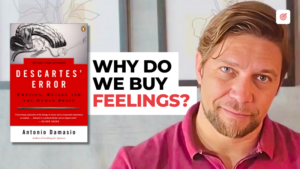We’re covering 24 copywriting techniques over 4 categories: Blogging, Email Marketing, Sales Page, and About Page in a 6 videos series to deliver a complete and practical copywriting tutorial.
In the last video, we learned 3 copywriting techniques to craft eye-catching blog titles.
The next logical step is to learn copywriting techniques you can use in your blog content.
So here’s what we’re going to do:
We will use 2 market case studies to extract 4 new copywriting techniques to use on blogs and any other piece of content.
But before we get into it…
Let’s dive in.
Copywriting Example 2 – Social Fresh: Are Stories Really The Future of Social Media?
What we can learn from this copywriting example?
Copywriting Technique #4: From Known to Unknown
Approaching a well-known subject can turn your copy into a boring experience.
Taking your readers from that common place to novelty by presenting an unknown aspect of a well-known subject will turn the table in your favor.
People might know the subject, but they might not know one or more aspects of it.
In Social Fresh copywriting example, we have Social media as the subject.
That’s common ground for most people.
By presenting an intriguing question about a feature (Stories), Social Fresh is adding novelty and life to its copy.
How to use that copywriting technique in your blog?
Take the well-known subject you’re addressing and add:
- New data.
- Comparisons.
- Curiosities.
Copywriting Technique #5: The Uncertain Future
Uncertainty about the future is a psychological fear we all have.
Social Media is a well-established media. But the current format as we know it, might be shaken by a new one. In this case, Stories.
An uncertain destiny of something well-established in the present can turn a boring subject into a compelling journey.
To add that technique to your copywriting, research statistics and trends around the topic and see how you can integrate that into the story you’re telling.
Another example of this copywriting technique could be:
- Self-driving cars. Are your driver’s license days over?
Remember, the main aspect of this technique is not only to question the future, but to intrigue your audience.
Copywriting Example 3 – Michael Hyatt: 5 Steps For Healthy Confrontation
What we can learn from this copywriting example?
Copywriting Technique #6: Tense & Relief
Health and confrontation are on opposite sides of our emotions.
- “Confrontation” produces tension. It’s the uncomfortable aspect of the copy.
- “Healthy” produces relief. It’s the comfortable aspect of the copy.
By putting them together, Michael Hyatt is presenting a comfortable way to deal with an uncomfortable situation.
Tense & Relief rely on emotional connection, not reason.
If you want to apply this copywriting technique to your content, make sure you focus on:
- Subjects related to emotional distress.
- Focus on the relationship side of things, when possible.
- Pick subjects that people need to face, even not liking them, like confrontations.
Copywriting Technique #7: KISS
KISS stands for Keep it Simple, Stupid.
The term was coined by Kelly Johnson, a Lockheed Martin engineer, during World War II.
The principle has been adopted by the US Navy and many different fields of knowledge over decades with some variations, like:
- Keep it Simple and Short.
- Keep it Short and Sweet.
- Keep it Simple, Soldier.
What’s behind this concept is that most systems work best if they are kept simple rather than complex.
KISS has led to a series of principles in copywriting, like:
- Make every paragraph, sentence, and word earn its keep in your copy.
- Keep in mind that simplicity is the ultimate degree of sophistication.
- If something is not adding value to the story you’re telling, it’s because it’s weakening it.
It’s a common mistake to think that adding more text to a piece of content, provides more value.
But valuable resources are scarce. That puts time on the top list.
You add more value to your copy when you save people’s time.
And you save people’s time when you say more with less.




